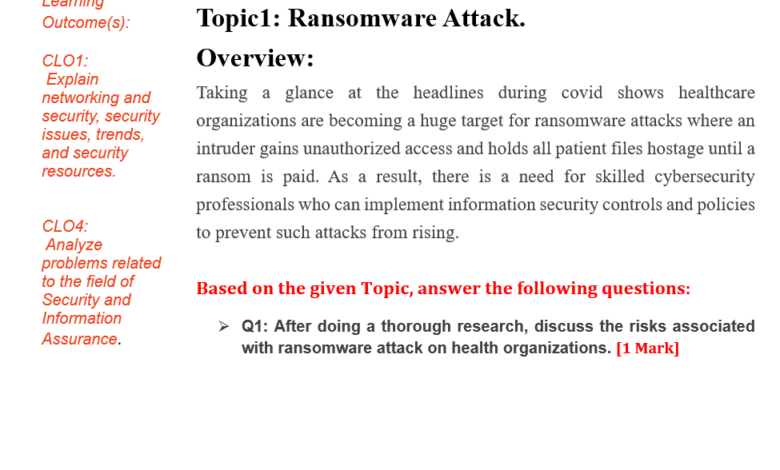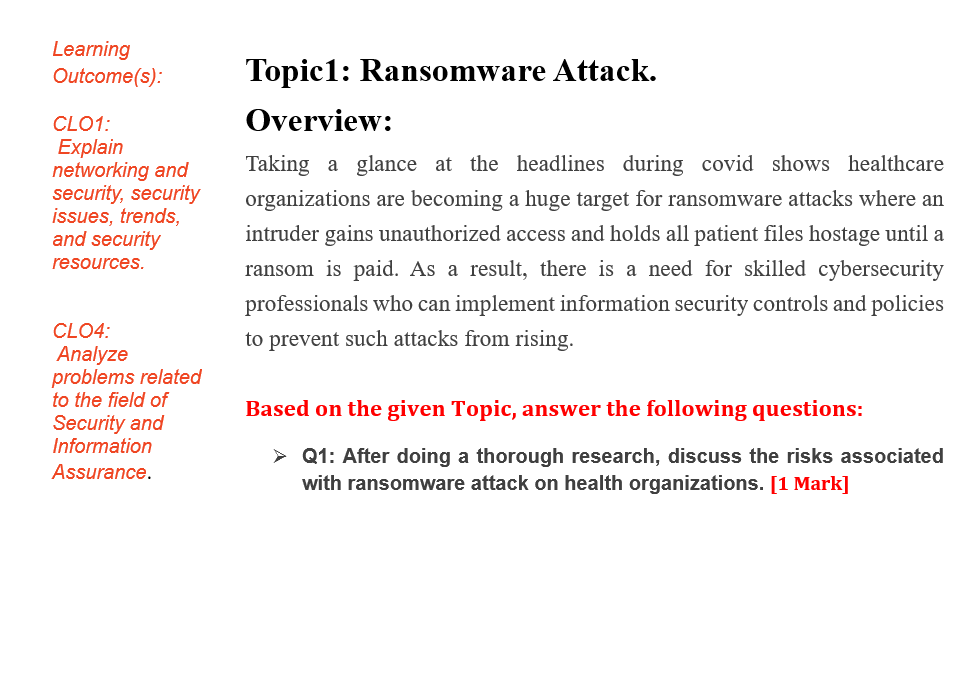
Ransomware Attack on Huber Heights Emergency Declared
Ransomware attack on Huber Heights drives it into emergency – a chilling headline that perfectly encapsulates the chaos and disruption that recently gripped this Ohio city. Imagine waking up to discover vital city services – from water to public safety – crippled by a malicious cyberattack. That’s the reality Huber Heights faced, plunging it into a state of emergency and leaving residents scrambling for answers.
This post dives into the details of this significant event, exploring the impact, the response, and the crucial lessons learned.
The attack wasn’t just an inconvenience; it exposed vulnerabilities in the city’s infrastructure and highlighted the growing threat of ransomware. We’ll examine the specific type of ransomware used, the attack vector, and the city’s response, including the steps taken to mitigate the damage and restore essential services. We’ll also look at the impact on residents and businesses, and explore what steps can be taken to prevent future attacks.
The Immediate Impact of the Ransomware Attack
The ransomware attack on Huber Heights’ city systems triggered immediate and widespread disruption, crippling essential services and forcing a declaration of a state of emergency. The speed and severity of the attack left city officials scrambling to contain the damage and restore critical operations. The impact was felt across multiple departments, leaving residents and businesses struggling to access vital services.The initial hours following the attack were chaotic.
Reports flooded in from various departments describing system failures and data inaccessibility. The scale of the disruption quickly became apparent, highlighting the city’s vulnerability to cyberattacks. The declaration of a state of emergency provided the necessary authority to mobilize resources and implement emergency protocols, but the situation remained tense as the full extent of the damage remained unknown.
Affected Services and Disruption
The ransomware attack severely impacted several key city services. The extent of the disruption varied, ranging from complete outages to significant performance degradation. The immediate consequences included delays in service delivery, financial losses, and a loss of public trust. The city’s emergency response teams worked tirelessly to mitigate the impact and restore services, but the recovery process was expected to be lengthy and complex.
| Service | Nature of Disruption | Estimated People Impacted |
|---|---|---|
| Water Billing System | Complete outage; inability to process payments or access account information. | ~25,000 residents |
| Police Department Records Management System | Partial outage; limited access to critical case files and investigative data. | Police personnel and potentially those involved in ongoing investigations. |
| Municipal Court System | Significant delays in court proceedings and access to electronic filing systems. | Court staff, attorneys, and individuals with court cases. |
| Public Works Department Scheduling System | Disruption in service scheduling and resource allocation; delays in road repairs and other public works projects. | Residents requiring public works services and public works employees. |
Declaration of a State of Emergency and its Consequences
The declaration of a state of emergency immediately allowed the city to access additional resources and streamline decision-making processes. This included the mobilization of the city’s emergency response team, the activation of backup systems (where available), and the initiation of communication protocols to inform residents and businesses of the ongoing situation and the potential impacts. The state of emergency also facilitated the allocation of funds for incident response, recovery efforts, and potentially for legal assistance and cybersecurity consulting services.
The immediate consequence was a shift to manual processes for many services, causing delays and inefficiencies. For example, water bill payments had to be processed manually, causing long lines at city hall. The incident also highlighted the need for improved cybersecurity infrastructure and protocols. The city’s experience mirrors similar events in other municipalities, emphasizing the growing need for proactive cybersecurity measures and robust disaster recovery plans.
The Nature and Scope of the Ransomware

The ransomware attack that crippled Huber Heights’ systems was a significant event, highlighting the vulnerability of even well-established municipalities to sophisticated cyber threats. Understanding the nature and scope of the ransomware used is crucial for both immediate recovery and future preventative measures. This section will delve into the specifics of the attack, from the initial infection vector to the ultimate ransom demand.The investigation revealed that the ransomware used was a variant of Ryuk, a highly destructive strain known for its aggressive encryption techniques and targeting of high-value targets.
Ryuk is particularly notorious for its ability to evade traditional antivirus software and its focus on disrupting critical infrastructure. Its capabilities include complete file encryption, rendering systems unusable, and the deletion of shadow copies, making data recovery extremely difficult.
Attack Vector and Encryption Methods
The attack vector in the Huber Heights incident appears to have been a phishing email. This email, disguised as a legitimate communication from a trusted source, contained a malicious attachment. Upon opening the attachment, malware was executed, providing the attackers with initial access to the network. Once inside, the Ryuk ransomware leveraged the network’s vulnerabilities to spread laterally, encrypting data across multiple servers and workstations.
The encryption process employed by Ryuk is robust, using a strong, asymmetric encryption algorithm, making brute-force decryption practically impossible. The attackers likely used a combination of techniques to ensure complete data encryption and hinder recovery efforts.
Timeline of Events
The timeline of the attack, based on available information, suggests the following sequence of events:
- Day 1: A malicious phishing email is received and opened by an employee. The initial malware payload is executed, granting the attackers access to the network.
- Day 2-3: The malware silently spreads laterally across the network, gaining access to critical systems and data. The attackers likely exfiltrated some data before encryption to increase the pressure for payment.
- Day 4: The ransomware payload is deployed, encrypting files across multiple servers and workstations. The attackers deploy the ransom note, demanding a specific amount of cryptocurrency in exchange for a decryption key.
- Day 5: Huber Heights declares a state of emergency, mobilizing resources to address the attack and initiate recovery efforts. The city begins contacting cybersecurity experts and law enforcement.
Ransom Demand and Communication
The ransom note, a hallmark of Ryuk attacks, demanded a substantial sum of cryptocurrency, typically Bitcoin. The attackers likely used a dark web communication channel to interact with Huber Heights officials, ensuring anonymity and avoiding detection. The ransom note likely contained instructions for payment and threats of further data destruction or public release of sensitive information if the ransom was not paid.
This pressure tactic is common in ransomware attacks, designed to incentivize quick payment.
The City’s Response to the Emergency: Ransomware Attack On Huber Heights Drives It Into Emergency
The ransomware attack on Huber Heights’ systems triggered an immediate and multifaceted response from city officials. The situation demanded swift action to contain the damage, restore essential services, and prevent future incidents. This response involved a coordinated effort across various departments, leveraging internal expertise and external partnerships. The overall goal was to minimize disruption to residents and ensure the continued operation of critical city functions.The city’s communication strategy was crucial in managing public perception and anxiety.
Transparency was prioritized to keep residents informed about the situation’s progress and impact on services. This included regular updates through the city’s website, social media channels, and local news outlets. Furthermore, a dedicated phone line and email address were established to address citizen inquiries and concerns. The goal was to provide timely and accurate information to counter misinformation and maintain public trust.
Resource Allocation
Addressing the ransomware attack required a significant allocation of resources. The city’s IT department played a central role, working around the clock to assess the damage, secure affected systems, and begin the recovery process. This involved bringing in specialized cybersecurity experts to assist with data recovery, incident response, and vulnerability assessments. Additionally, other city departments contributed their expertise and personnel, ensuring the continuity of essential services like public safety and emergency response.
The financial resources committed to addressing the attack included costs associated with cybersecurity consultants, data recovery services, and system upgrades.
Actions Taken to Address the Ransomware Attack
The city’s response can be categorized into immediate, short-term, and long-term actions.
The immediate response focused on damage control and preventing further spread of the ransomware.
- Immediately isolated affected systems to prevent further encryption.
- Initiated contact with law enforcement and cybersecurity experts.
- Implemented emergency communication protocols to inform the public.
- Secured all critical data backups to ensure data recovery.
Short-term recovery efforts centered on restoring essential services and minimizing disruption to residents.
- Prioritized the restoration of critical systems, such as emergency services and public safety communications.
- Implemented temporary workarounds for affected services.
- Began the process of data recovery and system restoration from backups.
- Launched an investigation to determine the extent of the breach and identify vulnerabilities.
Long-term preventative measures aim to enhance cybersecurity defenses and prevent future attacks.
- Implemented multi-factor authentication across all city systems.
- Upgraded cybersecurity software and implemented advanced threat detection systems.
- Developed and implemented a comprehensive cybersecurity awareness training program for all city employees.
- Reviewed and updated the city’s disaster recovery plan to address ransomware attacks specifically.
The Impact on Citizens and Businesses

The ransomware attack on Huber Heights’ systems had far-reaching consequences for its residents and the businesses that operate within the city. Disruption of essential services led to significant inconvenience and, in some cases, considerable financial hardship. The ripple effect of this cyberattack extended beyond the immediate technological failures, impacting the social fabric and economic stability of the community.The immediate consequences for Huber Heights residents were widespread.
Access to vital city services, such as online bill payments, permit applications, and even reporting non-emergency issues, was severely hampered or completely unavailable. Residents faced delays in receiving essential services like garbage collection and water utility responses, leading to frustration and potential health hazards in some cases. For those relying on online access to city information, the outage created significant barriers to accessing crucial data.
This impacted everything from finding information on local events to accessing important legal documents.
The ransomware attack on Huber Heights declared a city emergency – a truly scary situation. Thinking about the disruption, it makes me wonder about the future of resilient systems, and how platforms like those discussed in this article on domino app dev the low code and pro code future might help prevent such crises. Hopefully, advancements in secure app development will make these kinds of attacks less devastating in the future.
The Huber Heights incident really highlights the need for robust cybersecurity.
Disruption of Essential Services and Economic Losses for Businesses
Local businesses, particularly those heavily reliant on city services, experienced substantial disruptions. Construction companies, for example, faced delays in obtaining permits, leading to project standstills and lost revenue. Businesses that relied on online interactions with the city for tax payments or licensing renewals also suffered significant setbacks. Small businesses, often operating on tighter margins, were disproportionately affected by these disruptions, facing financial losses and potential long-term damage to their operations.
The inability to conduct business as usual created a domino effect, impacting employees, suppliers, and ultimately the wider community.
Impact on Vulnerable Populations
The impact of the ransomware attack was not evenly distributed across the population. Elderly residents and those with limited technological literacy struggled to navigate the disruptions and access alternative methods for receiving city services. Individuals without reliable internet access faced significant challenges, further exacerbating existing inequalities. Vulnerable populations, such as those with disabilities or limited financial resources, were particularly susceptible to the consequences of service disruptions, potentially impacting their access to healthcare, social support, and other crucial resources.
Visual Representation of Economic and Social Consequences
Imagine a network diagram. At the center is the Huber Heights city government, represented as a node heavily damaged by a lightning bolt (symbolizing the ransomware attack). From this central node, radiating outwards are lines connecting to other nodes representing various sectors: residents (categorized into age groups and socioeconomic status), businesses (categorized by size and type), and essential services (police, fire, sanitation, etc.).
The lines connecting to the damaged central node are broken or significantly weakened, indicating the disruption of communication and service delivery. The thickness of the lines represents the degree of dependence on city services. For example, the lines connecting to small businesses and vulnerable populations are thinner than those connecting larger businesses, illustrating their greater vulnerability. The damaged nodes representing businesses and residents show a decrease in activity, represented by a dimmed color, signifying economic and social consequences such as lost revenue, delayed projects, and increased stress levels.
The overall image conveys a picture of a city struggling to recover from a major disruption, with varying levels of impact across different segments of the population.
Lessons Learned and Future Preparedness
The ransomware attack on Huber Heights served as a harsh but invaluable lesson, highlighting critical vulnerabilities in our cybersecurity infrastructure and emergency response protocols. This experience underscores the need for a comprehensive overhaul of our security measures, encompassing technological upgrades, improved employee training, and refined emergency response plans. Moving forward, a proactive and multi-faceted approach is crucial to prevent future disruptions and ensure the continued smooth operation of city services.The immediate aftermath revealed several key weaknesses.
Our reliance on outdated antivirus software proved insufficient against sophisticated ransomware variants. Furthermore, the lack of robust multi-factor authentication across all city systems allowed attackers relatively easy access. Finally, insufficient network segmentation allowed the ransomware to spread rapidly throughout our network.
Vulnerability Remediation and Security Protocol Improvements
Addressing the vulnerabilities exposed during the attack requires a multi-pronged strategy. First, we will immediately upgrade to a next-generation antivirus solution with advanced threat detection capabilities, coupled with regular security audits and penetration testing to identify and address potential weaknesses proactively. Second, we will implement mandatory multi-factor authentication across all city systems and accounts, significantly increasing the difficulty for unauthorized access.
Third, we will implement robust network segmentation to isolate critical systems and limit the potential impact of future attacks. This includes implementing a zero-trust security model, where every user and device is authenticated and authorized before accessing resources, regardless of location. Finally, we will invest in advanced security information and event management (SIEM) systems to provide real-time monitoring and threat detection capabilities.
Data Backup and Recovery Strategies
The ransomware attack underscored the critical need for robust and regularly tested data backup and recovery procedures. We will implement a 3-2-1 backup strategy: maintaining three copies of our data, on two different media types, with one copy stored offsite. This strategy ensures data redundancy and business continuity even in the event of a catastrophic data loss event. Regular testing of the backup and recovery procedures will be crucial to ensure their effectiveness in a real-world scenario.
We will also explore cloud-based backup solutions to ensure greater resilience against physical threats. The implementation of immutable backups, which cannot be altered or deleted even by an administrator, will further enhance data protection.
Cybersecurity Awareness Training for Employees
Human error remains a significant vulnerability in any cybersecurity system. We will implement a comprehensive cybersecurity awareness training program for all city employees, covering topics such as phishing scams, malware detection, password security, and safe browsing practices. This program will include regular refresher courses and simulated phishing exercises to reinforce learning and keep employees up-to-date on evolving threats.
The program will also emphasize the importance of reporting suspicious activity immediately to the IT department. This initiative aims to cultivate a culture of cybersecurity awareness within the city government.
Emergency Response and Communication Improvements, Ransomware attack on huber heights drives it into emergency
Our response to the ransomware attack highlighted the need for improved emergency response and communication protocols. We will establish a dedicated incident response team with clearly defined roles and responsibilities. This team will undergo regular training exercises to simulate various scenarios and refine their response capabilities. We will also improve communication channels with citizens and businesses during emergencies, using multiple platforms (including social media, local news outlets, and a dedicated city website) to provide timely and accurate updates.
This will include pre-prepared communication templates and escalation procedures to ensure consistent and effective information dissemination. Regular drills and simulations will be conducted to test and improve these communication protocols.
Last Point
The ransomware attack on Huber Heights serves as a stark reminder of the ever-present threat of cybercrime, even in seemingly secure environments. The city’s swift declaration of a state of emergency, along with its efforts to contain the damage and restore services, demonstrates the importance of proactive cybersecurity measures and a well-defined emergency response plan. While the immediate crisis has passed, the long-term implications and lessons learned will undoubtedly shape the city’s approach to cybersecurity for years to come.
It’s a story that underscores the need for increased vigilance and preparedness in the face of these evolving threats. Let’s hope Huber Heights’ experience serves as a wake-up call for other communities.
Expert Answers
What type of data was affected by the ransomware attack?
The specific types of data affected haven’t been publicly released in full detail, but it’s likely that various city records, operational data, and potentially citizen information were encrypted.
Was a ransom paid?
Information regarding whether a ransom was paid has not been officially confirmed by Huber Heights officials. Many municipalities choose not to pay ransoms due to ethical and security concerns.
What long-term preventative measures is Huber Heights implementing?
Likely improvements include enhanced cybersecurity training for employees, improved data backup and recovery systems, and a more robust security infrastructure with advanced threat detection capabilities.
How can other cities learn from Huber Heights’ experience?
Other cities can learn from Huber Heights by investing in proactive cybersecurity measures, developing comprehensive emergency response plans, regularly testing their systems’ resilience, and fostering a culture of cybersecurity awareness amongst employees and the public.





